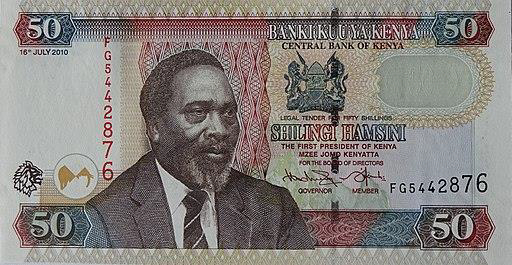
 Data Structure
Data Structure Networking
Networking RDBMS
RDBMS Operating System
Operating System Java
Java MS Excel
MS Excel iOS
iOS HTML
HTML CSS
CSS Android
Android Python
Python C Programming
C Programming C++
C++ C#
C# MongoDB
MongoDB MySQL
MySQL Javascript
Javascript PHP
PHP
- Selected Reading
- UPSC IAS Exams Notes
- Developer's Best Practices
- Questions and Answers
- Effective Resume Writing
- HR Interview Questions
- Computer Glossary
- Who is Who
What is the Kenyan Shilling (KES) and how does it work in finance management?
The Kenyan Shilling (KES) is the main currency of the Republic of Kenya. It is also used in Kenya, the Sudan, and Somalia, among other countries in Africa. The shilling is subdivided into 100 cents, with each cent representing one penny. Prices often contain the abbreviation KSh, as in "100 KSh" to refer to one hundred shillings, or "100 KSh" to refer to one hundred shillings. KES is the trade symbol for the foreign exchange market (FX).

KES/USD exchange rates touched a record high in 2009 at about 75 shillings per US dollar, but the rate steadily declined over the following few years, eventually reaching a high of more than 105 shillings per US dollar in 2015 and again in 2017. As of January 2021, one US dollar is equivalent to about 110 Kenyan shillings.
Key Points Briefly
The Kenyan shilling is the official currency of the African countries of Kenya, Sudan, and Somalia, and it is denominated in US dollars.
It has maintained its position as one of the most stable currencies in east Africa.
Because the Kenyan shilling is more stable than the native currencies in neighboring countries, it is often used as a wealth-storage currency.
Kenyan Shilling − What You Need to Know
The Kenyan shilling is among the most noted currencies in East Africa, ranking third among the region's major currencies. In reality, it is often used in neighboring countries with less stable currencies, such as Sudan and Somalia, where it is widely accepted.
A Brief Overview of the Kenyan Shilling's History
The Kenyan shilling was originally established in 1966 to replace the East African shilling, which had been in use since independence. It came into dominance after the decline of British from the region from early 1960s. There have been restrictions put up on printing of certain personalities on the currencies.
Monetary department is controlled and managed by the Central Bank whose objective has always been to provide a steady currency and also promote economic development in the region.
Kenya's Economy and the Kenyan Shilling (KES)
The country has witnessed decent growth in its Gross Domestic Product (GDP), that has increased to a respectable value of 5.8% by the year 2016. There has been difficulty for the nation to influence businessmen and organizations to lure them to hold on to the Kenyan Shillings over other assets.
Tourism has been a huge contributor for this growth of the Sub-Saharan nation that has demonstrated stable growth rate as per predictions of World Bank. Due to these reasons the investor confidence in the area and businesses has been boosted and we have seen major investments.
M-Pesa – Digital Form of payment
M-Pesa literally translates into Mobile , pesa, (that stands for money or payment in Swahili language) and was introduced as a modern and alternative method to traditional forms of payment in Kenya by the Vodafone group. Safaricom, Kenya's biggest mobile phone provider, introduced M-Pesa in 2007. It is a mobile money transfer service
Its functioning was similar to normal traditional banking system, but this was carried out digitally and the concept of branchless banking service soon became popular with the people of Kenya.

